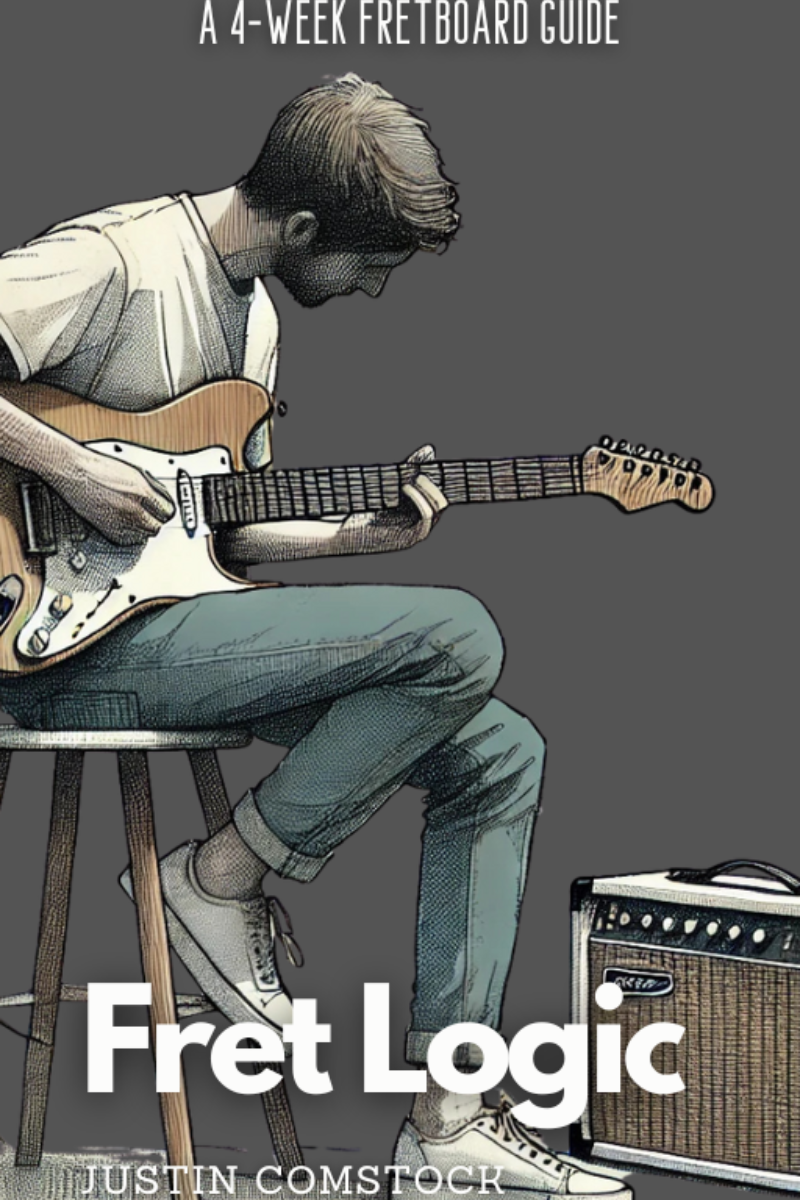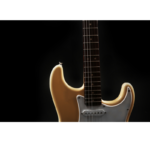The pentatonic scale is where many of us start—simple, familiar, and forgiving. Enter Pentatonic Modes
But here’s what they don’t teach you in your first YouTube lesson:
The five-note pentatonic scale holds hidden doors. And behind those doors? Pentatonic Modes.
By blending modal flavors into your pentatonic vocabulary, you unlock bold new textures—from the jazz-soaked Dorian to the moody Phrygian. This isn’t about learning something new from scratch. It’s about enhancing what you already know.
And if you want a daily, card-based way to practice all of this, check out my Kickstarter campaign for FretDeck: Pentatonic Secrets—60 scales, 6 chord progressions, and 6 solo prompts to master the fretboard. 🎯
🎸 Why Pentatonic Modes Are a Secret Weapon for Guitar Solos
Most guitar players stick to the minor or major pentatonic scale. That’s fine. That’s safe.
But modes add nuance. They turn a simple lick into a conversation.
All it takes is adding one or two notes to your go-to shape. Think of it like adding a new spice to your favorite dish—just enough to change the flavor without rewriting the recipe.

❌ Stop Guessing. Start Shredding.
If you’re still fumbling through scale patterns and box shapes… it’s costing you progress.
FretDeck™ is the no-fluff system that shows you exactly how to master the fretboard—fast. Early access.
⚡️ This isn’t for dabblers. It’s for players who want results.
👉 Click here to join the pre-launch now
Early access. Limited rewards. Don’t wait.
🌀 1. Dorian Pentatonic Modes + Minor Pentatonic
Sound: Soulful, jazzy, funky
A minor pentatonic: A – C – D – E – G
A Dorian: A – B – C – D – E – F# – G
➕ Add: B (2nd) and F# (6th)
🎧 What it feels like: Cool sunglasses and a groove. Think John Scofield meets Gary Clark Jr.
🎯 Try this:
Jam over Am7 – D9 – Gmaj7. Land on that F# to unlock the Dorian vibe.
🃏 Want a practice shortcut? FretDeck has a dedicated Dorian mode card in every key, complete with shape diagrams and solo prompts.
🧨 2. Mixolydian Mode + Major Pentatonic
Sound: Bluesy, dominant, swagger
A major pentatonic: A – B – C# – E – F#
A Mixolydian: A – B – C# – D – E – F# – G
➕ Add: D (4th) and G (b7)
🎧 What it feels like: That greasy blues-rock lick you play before the amp cools off.
🎯 Try this:
Solo over a 12-bar blues in A: A7 – D7 – E7
Hit that G note often—it’s your new best friend in the blues.
🔥 This is exactly the sound we unlock in Week 2 of the Pentatonic Secrets course. Get the full toolkit on Kickstarter while early-bird spots last.
🌘 3. Aeolian Mode + Minor Pentatonic
Sound: Dark, melancholic, cinematic
A minor pentatonic: A – C – D – E – G
A Aeolian: A – B – C – D – E – F – G
➕ Add: B (2nd) and F (b6)
🎧 What it feels like: A walk in the rain. Slow motion movie montage. Perfect for introspective solos.
🎯 Try this:
Progression: Am – G – F
Use F as your anchor tone—it’s the secret sauce in Aeolian expression.
🎯 Discuss Aeolian tricks and solos in our Guitar Freaks Hangout Discord—free access for all FretDeck backers.
🌞 4. Lydian Mode + Major Pentatonic
Sound: Bright, dreamy, modern
A major pentatonic: A – B – C# – E – F#
A Lydian: A – B – C# – D# – E – F# – G#
➕ Add: D# (#4)
🎧 What it feels like: A sunny day with strange clouds. It’s uplifting but slightly surreal.
🎯 Try this:
Play over Amaj7 – Emaj7 – Dmaj7 and spotlight the D#. It’ll ring out like a beam of light.
🧠 Lydian is a favorite among prog and fusion players. If you’re into Satriani or John Mayer’s weirder moments, this one’s for you.
🕯 5. Phrygian Mode + Minor Pentatonic
Sound: unique, dramatic, Spanish
A minor pentatonic: A – C – D – E – G
A Phrygian: A – B♭ – C – D – E – F – G
➕ Add: B♭ (b2) and F (b6)
🎧 What it feels like: Flamenco fire. Desert film noir. Pure tension and release.
🎯 Try this:
Play over Am – G – F, but lean into the B♭. Let it sting.
🔥 Phrygian gives your solos attitude. Get modal flashcards and fretboard drills in the FretDeck now—only available through our Kickstarter.
🧭 Practice Prompts: Bringing Pentatonic Modes to Life
Use these prompts to integrate pentatonic modes thinking into your everyday playing:
- 🎯 Loop a chord progression and target the mode-specific tones (like F# for Dorian, G for Mixolydian, or D# for Lydian).
- 🎯 Improvise in one shape but change the scale tones—this trains your ear faster than shape-hopping.
- 🎯 Record yourself soloing over the same progression with different modes. Compare the mood shifts.
- 🎯 Use FretDeck prompts to randomly pick a mode and key, then create a 30-second solo.

Join Guitar Freaks Hangout on Discord! 🎸
Get Fret Logic FREE!
Join the Guitar Freaks Hangout Discord and get exclusive access to my entire e-book, Fret Logic! Master the fretboard and elevate your solos with this comprehensive guide.
👉 Don’t miss out—join now and download your free copy!
🎓 Student Story: When Jack Found His Sound
Jack had been playing blues box licks for years. He could bend a string, but couldn’t bend a phrase.
Once we introduced modal layering—Dorian over Am7, Mixolydian over A7—he started to hear things differently. His solos became stories, not just runs.
Now Jack’s writing modal jams in Logic and jamming in the Guitar Freaks Hangout. His FretDeck deck is worn down, and that’s a good thing.
🛎️ Final CTA: Get the FretDeck + Join the Hangout
If you want to move beyond the “same old licks,” you need modal thinking.
FretDeck: Pentatonic Secrets gives you:
- 60 pentatonic scale cards (major + minor + modal)
- 6 real-world chord progressions
- 6 creative solo prompts
- Discord invites for community critique and guidance
⏳ Early-bird decks are limited. This is your chance to level up—without learning 200 new shapes.
👉 Back the Kickstarter Now
🎸 Unlock the neck. Learn the modes. Play with purpose.

❌ Stop Guessing. Start Shredding.
If you’re still fumbling through scale patterns and box shapes… it’s costing you progress.
FretDeck™ is the no-fluff system that shows you exactly how to master the fretboard—fast. Early access.
⚡️ This isn’t for dabblers. It’s for players who want results.
👉 Click here to join the pre-launch now
Early access. Limited rewards. Don’t wait.
🔗 Resources
✅ Internal Link:
Minor Pentatonic Scale on Guitar: Why Most Players Fail—and How You Can Master All 5 Positions Fast










